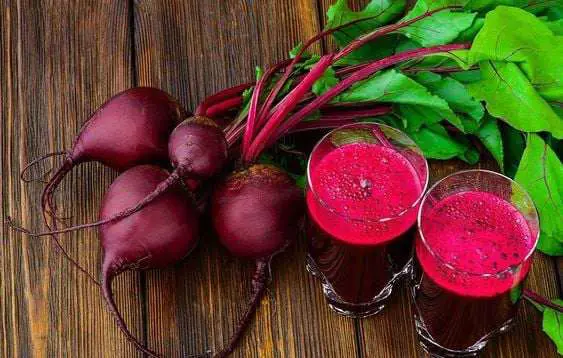A less noticed part of beets is recognized to be extremely nutrient-rich.

People often focus on using the beetroot, neglecting a part that the U.S. CDC acknowledges as the most nutrient-rich.
Beet leaves are rich in nutrients.
A study conducted by the U.S. CDC examined 17 nutrients, including protein content, calcium, fiber, potassium, and other trace elements, in the 41 most nutrient-rich vegetables and fruits. Among them, a part of beets that the U.S. CDC highly rates as the most nutrient-rich is the beet leaves, scoring 87.08 points.
Traditionally, people tend to concentrate on the beetroot. This superfood is known for its rich nutritional composition, especially beneficial for the digestive system, the brain, and individuals with high blood pressure. Notably, beetroot contains certain cancer-fighting compounds such as ferulic acid, rutin, kaempferol, and caffeic acid.
A less noticed part of beets is recognized to be extremely nutrient-rich – Image 1. Beet leaves are rich in nutrients, but many people often overlook them.
Rarely do people pay attention to the green leafy part above the beetroot; in fact, some cut or discard it without knowing that this vegetable part is incredibly nutritious. Research on beet leaves has found them to contain various health-promoting nutrients such as vitamin A, folate, calcium, vitamin B, and notably, vitamin K. In 100 grams of beet leaves, the body can receive approximately 125% of the essential vitamin K content… Thus, beets are still considered a blood-enriching food.
Delicious dishes made from beets.
While both beets and their parts are beneficial for health, according to Dr. Hoang Thi Thuy (Medlatec Hospital), for individuals with a history of kidney stones or existing kidney stones, consumption should be limited. Eating or drinking beet juice can exacerbate kidney stone conditions, leading to a recurrence of the disease due to the oxalate content in beets. When using beet leaves or beetroot juice, it is advisable to avoid adding milk to make it creamier.
Moreover, many parents believe that red beet juice is good for blood enrichment and is suitable for children, but it is not suitable for children under 6 months old.
Apart from consuming beets and beet leaves for smoothies, people can use young beet leaves as ingredients for various dishes. In addition to using them for stir-fries, beet leaves can be used to make soup or salads…
- Italian pasta with beet leaves
Ingredients: 1 bunch of beet leaves; Italian pasta; sesame oil; seasoning, oyster sauce…
Instructions: Clean and cut beet leaves into sections, boil the Italian pasta until just cooked. Then, stir-fry broccoli with a little sesame oil, add beet leaves, a bit of water, seasoning, cover for about 2 – 3 minutes until the vegetables are cooked. Finally, add the cooked pasta and stir quickly with a dash of oyster sauce, season to taste, and it’s ready to serve.
A less noticed part of beets is recognized to be extremely nutrient-rich – Image 2.
- Beet leaves soup
- Ingredients: 1 bunch of beet leaves; 200g pork; seasoning salt, broth powder, monosodium glutamate, fish sauce, pepper…
- Instructions:

Step 1: Clean the pork, finely chop it with a knife, and put it in a bowl. People can also buy pre-ground meat. Then marinate the meat with 1/3 teaspoon of pepper, 1/2 teaspoon of seasoning salt, 1 teaspoon of fish sauce, broth powder, monosodium glutamate… mix well and marinate for about 15 minutes.
For the beet leaves, remove any damaged leaves, wash them thoroughly, and finely chop them with a knife. Peel the purple onion, chop it finely.
Step 2: Add cooking oil to the pot, sauté the chopped onion until fragrant, then add the marinated meat and stir-fry until brown. Pour water into the pot and bring it to a boil. At that point, add the beet leaves and cook until the vegetables are tender. Season to taste and serve the soup in a bowl for the family to enjoy.